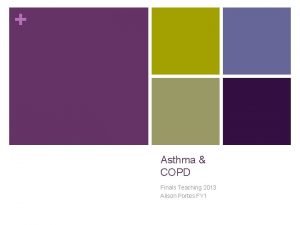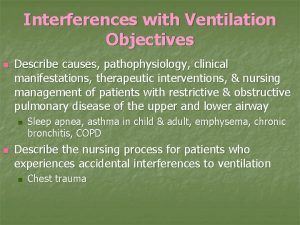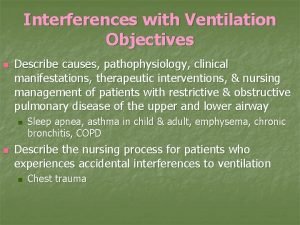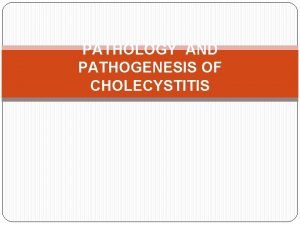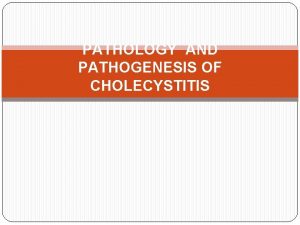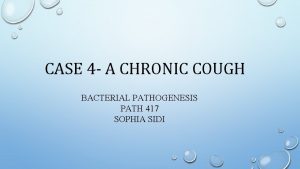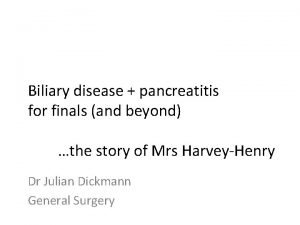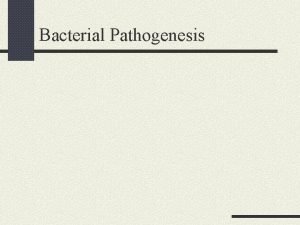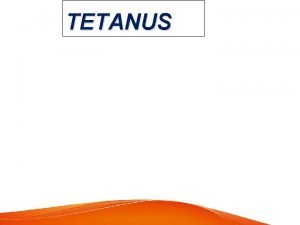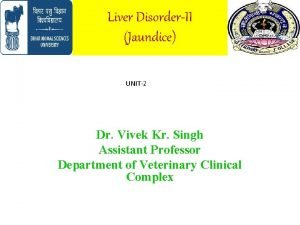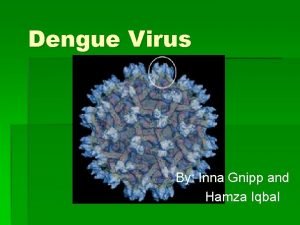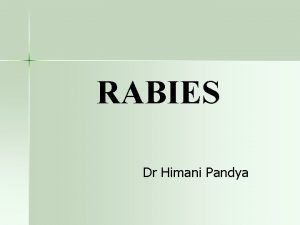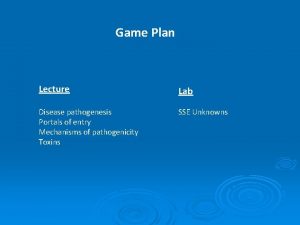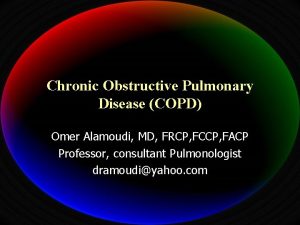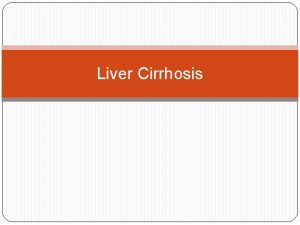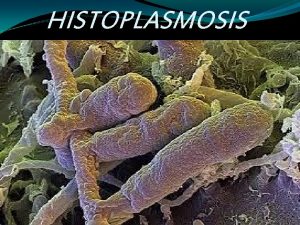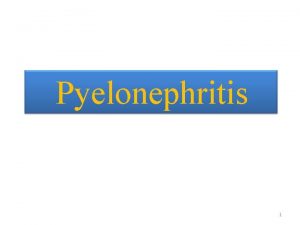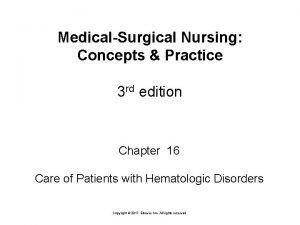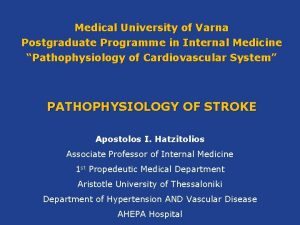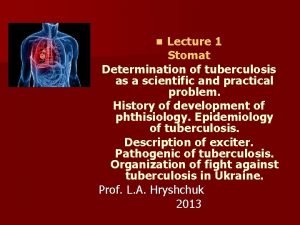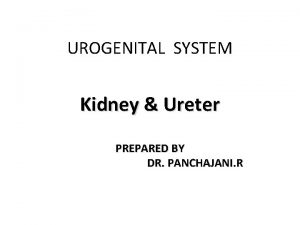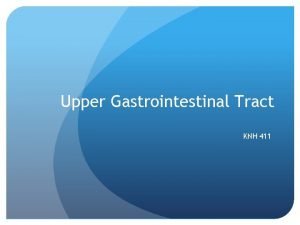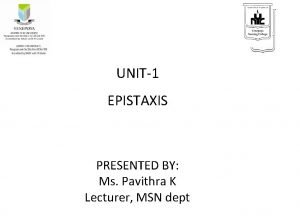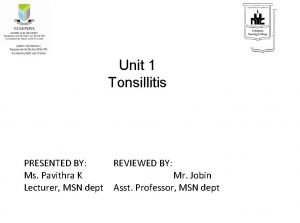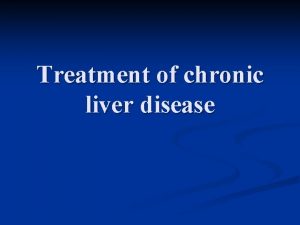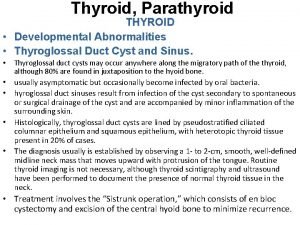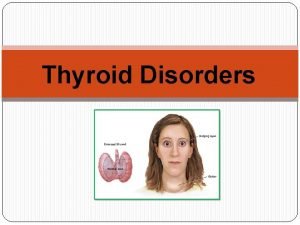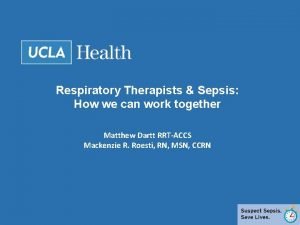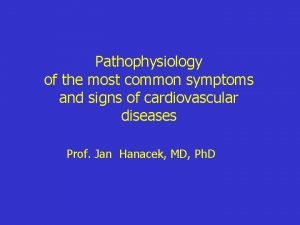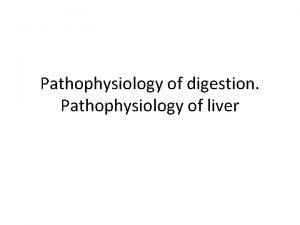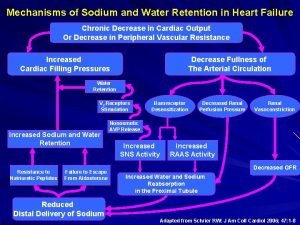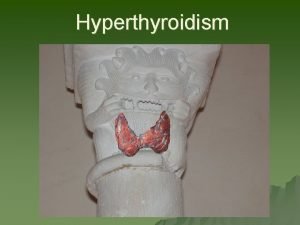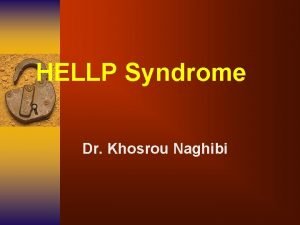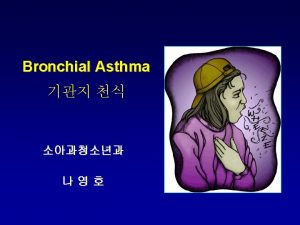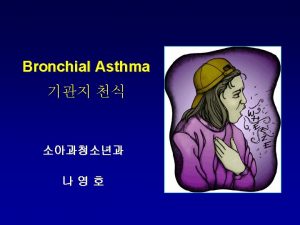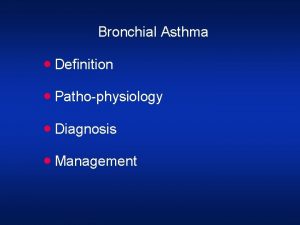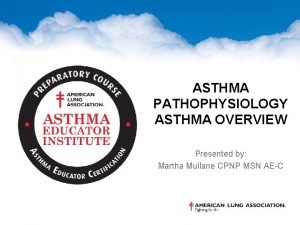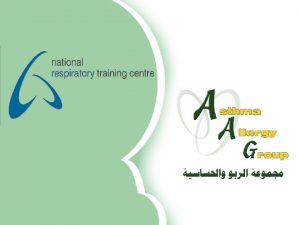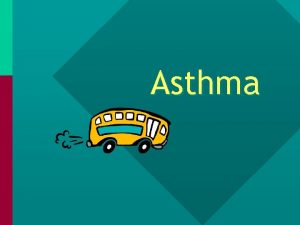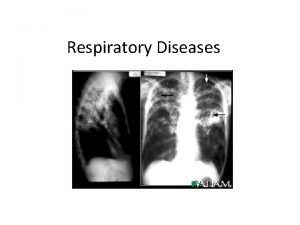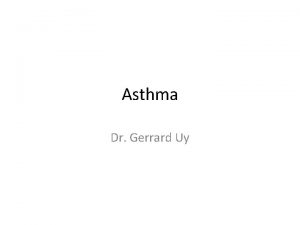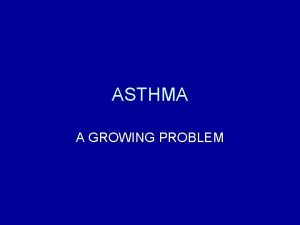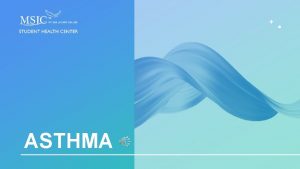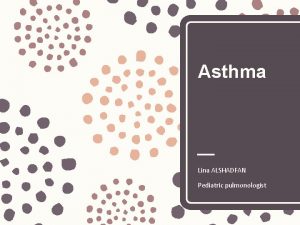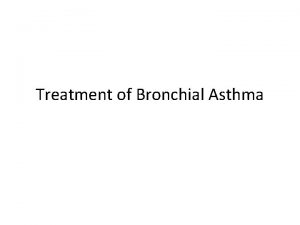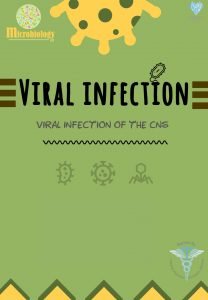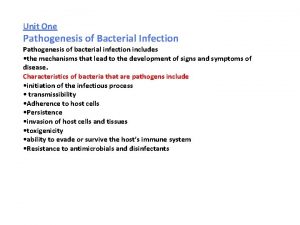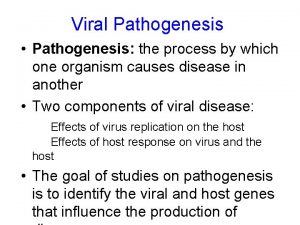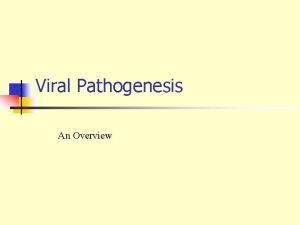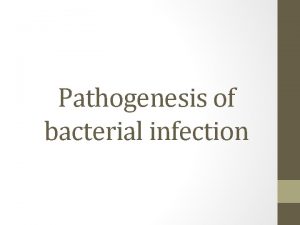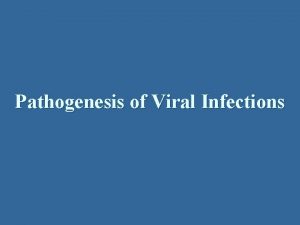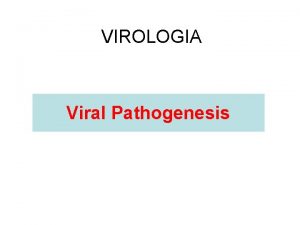Asthma Definition Pathophysiology Pathogenesis 1 Asthma is a









































- Slides: 41


Asthma: Definition, Pathophysiology & Pathogenesis (1) Ø Asthma is a chronic inflammatory disorder of the airways. Ø The immunohistopathologic features of asthma include inflammatory cell infiltration. Ø Airway inflammation contributes to airway hyper-responsiveness, airflow limitation, respiratory symptoms, and disease chronicity. Ø In some patients, persistent changes in airway structure occur, including sub-basement fibrosis, mucus hyper-secretion, injury to epithelial cells, smooth muscle hypertrophy, and angiogenesis. (remodeling)

Asthma: Definition, Pathophysiology & Pathogenesis (2) Ø Gene-by-environment interactions are important to the expression of asthma. Ø Atopy, the genetic predisposition for the development of an immunoglobulin E (Ig. E)-mediated response to common aeroallergens, is the strongest identifiable predisposing factor for developing asthma. Ø Viral respiratory infections are one of the most important causes of asthma exacerbation and may also contribute to

Asthma: pathogenesis

Pathogenetic Mechanism of Asthma








Diagnosis of Asthma


Symptoms and Signs of Asthma • The cardinal symptoms of asthma : the combination of shortness of breath, wheezing; chest tightness; and cough. • Dyspnea : as an isolated symptom can be attributed to asthma in at least 15% of patients evaluated for this complaint. • asthma has a circadian rhythm – characteristic increase in symptoms (e. g. , cough, dyspnea, and wheezing) during sleep – frequency of nocturnal asthma : key indicator of asthma severity

Asthma: dyspnea

Physical Examination • Examination of the chest in patients with mild intermittent asthma: typically normal when performed between exacerbations • In more severe disease and during attacks – tachypnea, tachycardia – exaggeration of normal inspiratory fall of systolic blood pressure (pulsus paradoxus) > 10 mm. Hg – hyperinflation of the chest with flattened diaphragmatic excursion, use of accessory muscles of respiration, – hyperresonance of percussion note, prolongation of expiration, – inspiratory and expiratory musical-sonorous rhonchi and wheezes heard on auscultation • Absence of wheezing on auscultation – does not always mean lack of airway obstruction – patients with very severe obstruction may have minimal airflow

Laboratory Diagnosis of Asthma (1) • Pulmonary Function Tests: establish the diagnosis of asthma, to quantify the severity of the disease, and to monitor the course of the disease and response to therapy. – Spirometry – Bronchoprovocation- Nonspecific Airway Hyperresponsiveness • Pulse oximetry and arterial blood gas (ABG) measurements. • Self-monitoring by serial measurements and recordings of PEFRs (peak expiratory flow rates) – performed by the patient using a peak flow meter – provide insights into perceptions of airways obstruction; course of disease, including severity, response to therapy, and prediction and detection of exacerbation; and the identification of environmental precipitants of asthma

Typical Spirometric (FEV 1) Tracings Volume FEV 1 Normal Subject Asthmatic (After Bronchodilator) Asthmatic (Before Bronchodilator) 1 2 3 Time (sec) Note: Each FEV 1 curve represents the highest of three repeat measurements 4 5

FV curve Pre-&post-BD

Bronchoprovocation: Methacholine challenge test Normal BHR (+)

Mini-Wright Peak Flow Meter

A Simple Index of PEF Variation Highest PEF (670) PEF (L/min) 800 700 600 500 Lowest PEF (600) Morning PEF Evening PEF 400 300 0 7 Days 14 PEFR variability: (Highest-Lowest PEFR)/ (Higest + Lowest) x ½ e. g. (670 -600) / (670+600) x ½ = 11%

Laboratory Diagnosis of Asthma • Tests for Ig. E Antibodies/ serum total Ig. E concentration • Peripheral blood eosinophil count • Microscopic examination of induced sputum or "wet preps" from patients with asthma – bronchial epithelial cells in clusters (Creola bodies) – eosinophils, Charcot-Leyden crystals – Curschmann's spirals of mucinous material of varying sizes from small airways • Chest radiographs – increased residual air manifested by overexpansion of the lungs with an increase of anteroposterior (AP) dimension, increase in retrosternal lucency, flattening of the diaphragm • Chest CT/High-resolution computed tomography (HRCT) : more sensitive for detecting subtle airways changes, such as early bronchiectasis, pulmonary fibrosis, and emphysema

Acute asthma: chest X-ray

Acute asthma: chest X-ray

Mucus Plug in Bronchial Asthma One of the response of the bronchiole in asthma is the metaplastic proliferation of goblet or mucus-producing cells. Often, this results in the over-production of mucus, which plugs otherwise severely broncho-constricted bronchioles. One sometimes sees eosinophils within the mucus, occasionally with crystallized eosinophilic granules (Charcot-Leyden crystals).

Curschmann's spiral in sputum from asthma patient • CURSCHMANN'S SPIRAL - Spiral shaped mucous plug. Seen in asthma patients and patients with COPD.

CHARCOT LEYDEN CRYSTALS, MICRO - Eosinophilic needleshaped crystalline structures. Represents breakdown products of eosinophils. Seen in asthma and eosinophilic pneumonia.

Differential Diagnosis of Asthma • • Chronic Obstructive Pulmonary Disease (COPD) Cardiac Asthma Pulmonary Embolism Eosinophilic Lung Disease Carcinoid Tumor, carcinoid syndrome Mastocytosis In children – Viral bronchiolitis – Anatomic anomalies: vascular ring, T-E fistula, Rt. side aortic arch – Laryngomalacia – Gastroesophageal reflux disease (GERD) – Pneumonia – Pulmonary edema – Foreign body aspiration – Vocal cord dysfunction (VCD)

Treatment of Asthma

2007 - Guidelines For The Diagnosis & Management Of Asthma Expert Review Panel (EPR-3)

Key Points – Asthma Control (Goals of Therapy) Reducing impairment – Prevent chronic & troublesome symptoms. – Prevent frequent use (< 2 days /wk) of inhaled SABA for symptoms. – Maintain (near) “normal” pulmonary function. – Maintain normal activity levels (including exercise & other physical activity & attendance at work or school). – Meet patients’ and families’ expectations of and satisfaction with asthma care. EPR- 3, p. 50

Key Points – Asthma Control (Goals of Therapy) Reducing Risk – Prevent recurrent exacerbations of asthma and minimize the need for ER visits and hospitalizations. – Prevent progressive loss of lung function - for children, prevent reduced lung growth. Ø Ø Ø – Provide optimal pharmacotherapy with minimal or no adverse effects. Periodic assessments at 1 -6 month intervals. Patient self-assessment (w/clinician). Spirometry testing. NAEPP 2007 guidelines, sec. 3, p. 53

Asthma Control = Asthma Goals Ø Ø Definition of asthma control is the same as asthma goals reducing impairment and risk. Monitoring quality of life, any: – work or school missed because of asthma? – reduction in usual activities? – disturbances in sleep due to asthma? – Change in caregivers activities due to a child's asthma?

Assessing Asthma Control In Youths 12 Years of Age & Adults

NOT Currently Taking Controllers

Classifying Severity AFTER Control is Achieved – All Ages Classification of Asthma Severity Lowest level of treatment Intermittent required to maintain control Step 1 Persistent Mild Moderate Severe Step 2 Step 3 or 4 Step 5 or 6 (already on controller)

Key Points - Medications Ø Controller medications: – Corticosteroids – Long Acting Beta Agonists (LABA’s) – Leukotriene modifiers (LTRA) – Cromolyn & Nedocromil Ø Methylxanthines: (Sustained-release theophylline) Ø Quick- relief medications – Short acting bronchodilators (SABA’s) – Systemic corticosteroids – Anticholinergics

Stepwise Approach for Managing Asthma in Youths >12 Years of Age & Adu Intermittent Asthma Persistent Asthma: Daily Medication Consult asthma specialist if step 4 care or higher is required. Consider consultation at step 3 Step 5 Step 4 Step 3 Preferred: Step 1 Low dose ICS Low-dose ICS + LABA OR – Medium dose ICS Preferred: SABA PRN Alternative: Cromolyn, LTRA, Nedocromil or Theophylline Alternative: Low -dose ICS + either LTRA, Theophylline, or Zileuton Step 2 Preferred: Preferred High Dose ICS + Preferred: Medium Dose ICS + LABA Alternative: Mediumdose ICS + either LTRA, Theophylline , or Zileuton LABA AND Consider Omalizumab for patients who have allergies Step 6 Step up if needed Preferred (first check adherence, environment al control & comorbid conditions) High dose ICS + LABA + oral corticosteroid AND Consider Omalizumab for patients who have allergies Assess control Step down if possible (and asthma is well controlled at least 3 months) Each Step: Patient Education and Environmental Control and management of comorbidities Steps 2 – 4: Consider subcutaneous allergen immunotherapy for patients who have allergic asthma • Quick-relief medication for ALL patients -SABA as needed for symptoms: up to 3 tx @ 20 minute intervals prn. Short course of o systemic corticosteroids may be needed. • Use of SABA >2 days a week for symptom relief (not prevention of EIB) generally indicates inadequate control & the need to step up treatment.

 Asthma pathophysiology
Asthma pathophysiology Asthma pathophysiology
Asthma pathophysiology Co2 narcosis
Co2 narcosis Asthma pathophysiology
Asthma pathophysiology Pathophysiology definition
Pathophysiology definition Pathogenesis of pleomorphic adenoma
Pathogenesis of pleomorphic adenoma Uremia pathogenesis
Uremia pathogenesis Chronic calculous cholecystitis
Chronic calculous cholecystitis Cholecystitis pathogenesis
Cholecystitis pathogenesis Bacterial pathogenesis
Bacterial pathogenesis Cholecystitis pathophysiology
Cholecystitis pathophysiology Bacterial pathogenesis
Bacterial pathogenesis Tetanus
Tetanus Jaundice pathogenesis
Jaundice pathogenesis Pathogenesis dengue fever
Pathogenesis dengue fever Rabies pathogenesis
Rabies pathogenesis Pathogenesis steps
Pathogenesis steps Pathogenesis game
Pathogenesis game Pathogenesis of copd
Pathogenesis of copd Primary biliary cholangitis skin
Primary biliary cholangitis skin Histoplasma capsulatum pathogenesis
Histoplasma capsulatum pathogenesis Pathogenesis of chronic pyelonephritis
Pathogenesis of chronic pyelonephritis Pathophysiology of anemia diagram
Pathophysiology of anemia diagram Mechanism of ischemic stroke
Mechanism of ischemic stroke Pathogenesis of tuberculosis
Pathogenesis of tuberculosis Panchajani
Panchajani Dumping syndrome pathophysiology
Dumping syndrome pathophysiology Pathophysiology of epistaxis
Pathophysiology of epistaxis Pathophysiology of tonsillitis
Pathophysiology of tonsillitis Hepatic encephalopathy pathophysiology
Hepatic encephalopathy pathophysiology Thyroglossal cyst pathophysiology
Thyroglossal cyst pathophysiology Thyroid
Thyroid Neonatal sepsis pathophysiology diagram
Neonatal sepsis pathophysiology diagram Pathophysiology signs and symptoms
Pathophysiology signs and symptoms Digestion
Digestion Thyroid storm pathophysiology
Thyroid storm pathophysiology Pathophysiology of sodium and water retention
Pathophysiology of sodium and water retention Taxis hernia
Taxis hernia Multinodular goiter pathophysiology
Multinodular goiter pathophysiology Colloid defintion
Colloid defintion Pathophysiology of hirschsprung disease
Pathophysiology of hirschsprung disease Hellp syndrome pathophysiology
Hellp syndrome pathophysiology

